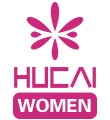What Factors Affect the Manufacturing Cost of Compression Leggings?
1. Why Understanding Cost Drivers Matters for Brands
For performance-driven activewear brands, pricing your compression leggings correctly starts with knowing how each production element contributes to cost. Unlike basic yoga pants or athleisure leggings, compression leggings require precise patterning, stronger fabrics, and tighter sewing tolerances — all of which directly impact production costs. Understanding these factors helps brands negotiate effectively, maintain profit margins, and ensure product quality aligns with premium positioning.
2. Major Factors That Influence the Cost of Compression Leggings
| Factor | Description | Cost Impact |
| Fabric Composition & Quality | Compression fabrics typically include high percentages of spandex (20–30%) blended with nylon or polyester. Premium yarns like Lycra®, Carvico®, or REPREVE® cost more but ensure superior stretch and recovery. | ★★★★★ |
Fabric Weight & Density | Heavyweight (250–320gsm) materials provide stronger compression but require more consumption per piece. | ★★★★☆ |
Pattern Complexity | Multi-panel designs with contoured seams, mesh inserts, or bonded joints demand additional cutting and sewing steps. | ★★★★☆ |
| Stitching & Machinery | Compression leggings use flatlock or 4-needle-6-thread stitching that requires advanced machines and skilled operators. | ★★★★☆ |
| Branding & Decoration | Silicone, TPU, or reflective logos add visual identity but involve heat-press or bonding steps. | ★★★☆☆ |
Labor & Expertise | High-stretch fabric sewing demands experienced technicians for precision and consistency. | ★★★★☆ |
Testing & Quality Assurance | Premium compression wear undergoes tests for stretch recovery, color fastness, shrinkage, and pilling resistance. | ★★★☆☆ |
Packaging & Logistics | Custom polybags, hangtags, and DDP shipping options (to USA/EU) affect final landed cost. | ★★☆☆☆ |
3. Fabric Selection: The Core Cost Determinant
The choice of fabric alone can account for 40–60% of total cost in compression leggings production.
Premium performance fabrics include:
- Nylon-Spandex 75/25 blends: High elasticity, soft handfeel, durable recovery.
- Recycled Polyester-Spandex blends: Sustainable yet slightly stiffer feel.
- Interlock or warp-knit fabrics: Reduce transparency under tension.
4. Technical Craftsmanship and Equipment
Compression leggings require special techniques to maintain consistent pressure mapping and seam strength. Premium factories invest in:
- Automatic fabric spreaders & laser cutters (±0.2mm precision)
- Flatlock & 4-needle-6-thread machines for seamless joints
- Bonding or heat-seal processes for irritation-free construction
- TPU logo pressing systems for flexible branding
Each layer of technology enhances comfort and durability — but adds incremental cost. Factories without these technologies may produce cheaper products, but risk performance inconsistency.
5. Design Complexity and Sampling Iterations
Compression leggings often go through 2–3 sample rounds before approval due to the technical fit and compression level validation. Complex designs with side pockets, panel seams, or reflective details require more development hours. Leading OEMs with digital CAD and 3D pattern systems (like HUCAI) reduce sampling time while ensuring precise body contour fit.
6. Regional and MOQ Influences on Price
| Region | Typical MOQ | Unit Cost Range (USD) | Profile |
| China (Dongguan, Xiamen) | 100–300 pcs/style | $12–22 | Best for premium, technical, small-batch brands |
| Vietnam | 300–500 pcs/style | $10–18 | Stable pricing, slightly longer lead time |
| Bangladesh | 500–1000 pcs/style | $8–14 | Better for bulk, lower-tech gymwear lines |
7. Balancing Cost with Brand Value: HUCAI’s OEM Approach
HUCAI activewear manufacturing factory focuses on optimizing the balance between performance quality and production efficiency. Through digital production management (ERP + MES), the company reduces wastage, shortens cycles, and delivers brand-level QC across all compression wear lines.
Advantages of HUCAI OEM/ODM system:
- Fabric sourcing directly from certified mills (OEKO-TEX®, GRS)
- 100% tech-pack accuracy via digital pattern review
- In-house testing lab to ensure every batch meets compression consistency standards
- DDP shipping options for USA/EU to simplify delivery and pricing
Result: brands get stable unit pricing with premium-grade compression quality and short lead times.
8. Final Thoughts: Precision Engineering Defines True Cost
The real cost of compression leggings is not in material alone — it's in precision engineering. Brands that prioritize fabric integrity, seam technology, and fit accuracy will achieve longer product lifespans, higher consumer satisfaction, and better returns. Choosing the right OEM partner ensures every dollar spent reflects durability, performance, and brand equity.
Looking to develop high-quality compression leggings with transparent cost breakdowns and technical excellence? Contact HUCAI sportswear manufacturer today for professional OEM/ODM support.






